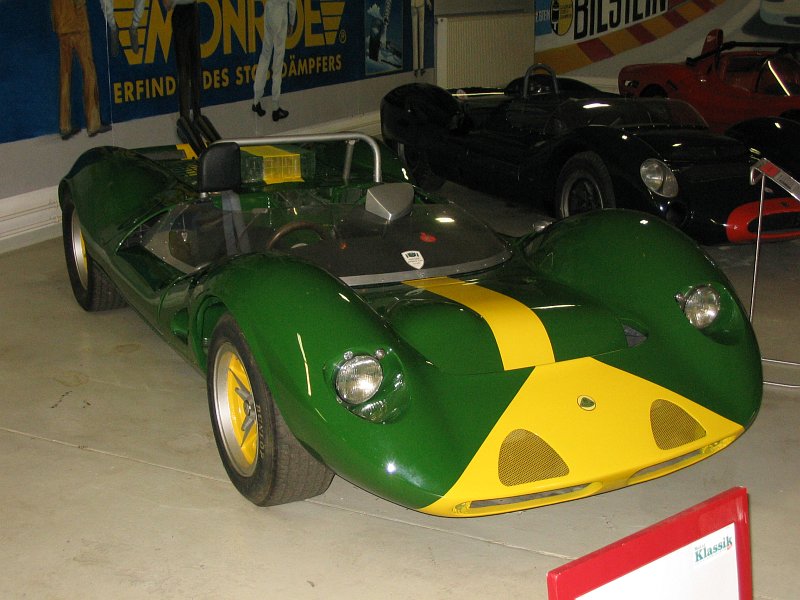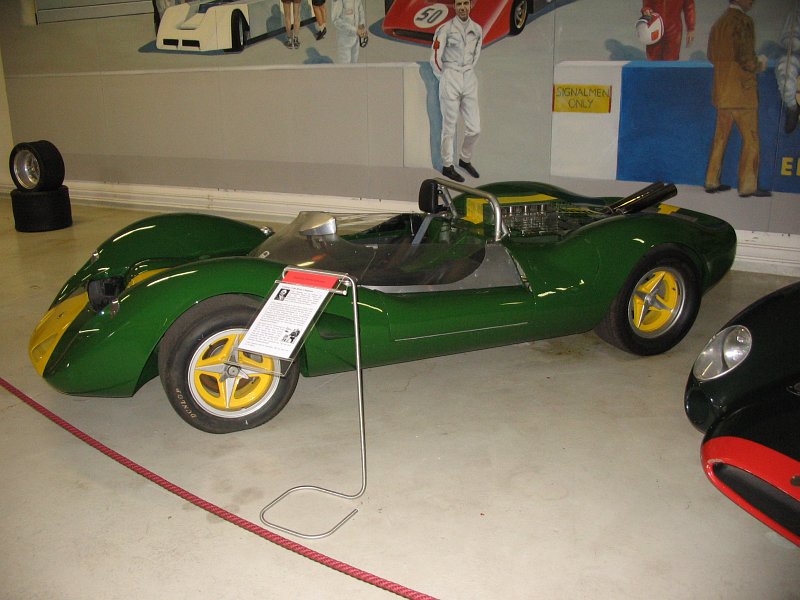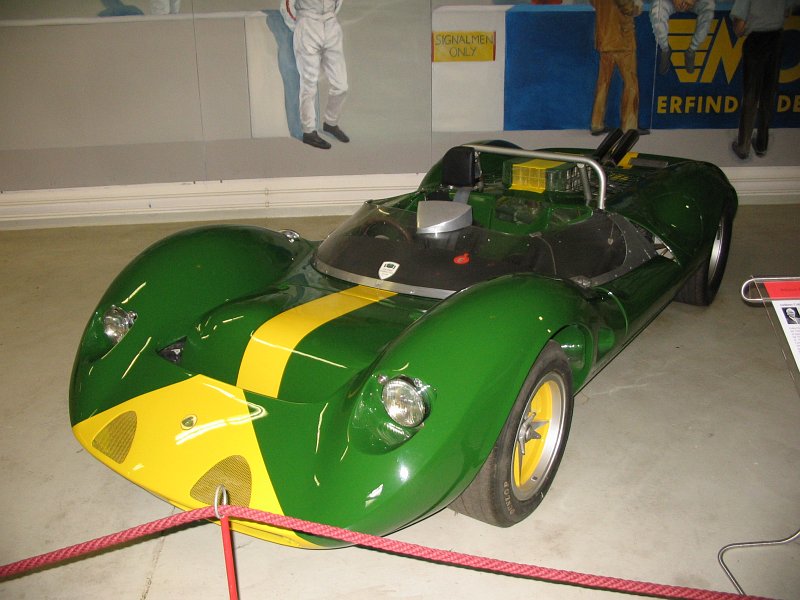Description
The Lotus Mark 40, introduced in 1965, was the direct successor to the Lotus 30 and represented Colin Chapman’s final and most powerful attempt to create a competitive large-displacement Group 7 sports-racing car. It was, in essence, an evolution of the 30’s concept — a lightweight, mid-engined machine built around a central backbone chassis and powered by a massive Ford V8. The Mk 40 carried forward the same breathtaking performance potential and striking design, but it also inherited many of the structural challenges that had limited the success of its predecessor. Despite its flaws, the Lotus 40 remains one of the most dramatic and fascinating cars in the company’s history, a spectacular blend of innovation, ambition, and raw power.
The Lotus 40 was developed for both European Group 7 racing and the emerging North American sports-car series that would later evolve into the Can-Am Championship. It used a modified version of the aluminium backbone chassis from the Lotus 30, strengthened and stiffened in an attempt to cope with the vastly increased torque of its new powerplant. The car was fitted with a Ford 289 cubic-inch (4.7-litre) or 305 cubic-inch (5.0-litre) V8 engine, similar to that used in the Ford GT40 and Shelby Cobra, producing between 400 and 450 horsepower depending on tuning. In a car weighing just over 600 kilograms, the performance was staggering. The Mk 40 could accelerate from 0 to 100 mph in under 8 seconds and reach a top speed of around 180 mph — figures that put it on par with the fastest sports prototypes of its era.
However, the structural concept that worked so well in lighter Lotus designs was again pushed beyond its limits. The backbone chassis, though reinforced, still suffered from flex under the immense loads generated by the big V8 and the wide racing tyres. This led to unpredictable handling at the limit and a tendency for the car to lose composure under heavy braking or rapid direction changes. Despite these issues, Chapman’s design team managed to create a car that was significantly more refined than the Lotus 30, with better suspension geometry, improved weight distribution, and stronger componentry throughout.
The suspension setup was fully independent, featuring unequal-length wishbones and coil springs with telescopic dampers at the front, and reversed lower wishbones with twin radius arms and outboard coil-over units at the rear. Four-wheel Girling ventilated disc brakes provided immense stopping power, while the steering remained a quick rack-and-pinion layout with excellent feedback. The transmission was typically a ZF five-speed transaxle, chosen for its strength and compactness, though some examples used Hewland units depending on availability.
The fibreglass bodywork, again designed by Ron Hickman, was among the most striking of any Lotus car of the period. It was low, wide, and aggressive, with an aerodynamic nose, integrated wheel arches, and flowing lines that gave it an unmistakable presence on the track. The proportions were beautifully balanced — long and low but muscular, with a commanding stance that suggested immense power. The rear section was dominated by the large engine cover and pronounced haunches, housing the car’s massive racing tyres. The Lotus 40 was visually spectacular — one of the most imposing sports cars ever to emerge from Hethel.
The Lotus 40 made its racing debut in 1965 and was entered in several international events, including the Guards Trophy at Brands Hatch and races in the United States, where the growing Can-Am-style competitions attracted huge crowds. Driven by works drivers such as Jim Clark, Richie Ginther, and Parnelli Jones, the car demonstrated phenomenal straight-line speed but also revealed the same fundamental instability that had plagued the 30. Clark famously described the 40 as “a Lotus 30 with 10 more mistakes,” a wry but telling comment on the car’s unpredictable nature at the limit. The combination of chassis flex, high power, and primitive tyre technology made it difficult to handle, particularly on bumpy circuits or under heavy braking.
Despite its shortcomings, the Lotus 40 had moments of brilliance. In the hands of skilled drivers, it could be blindingly fast, particularly on smoother circuits where its aerodynamics and power could be fully exploited. It served as a valuable development platform, teaching Lotus engineers critical lessons about the limits of the backbone chassis concept and the structural demands of high-torque racing cars. These lessons directly informed Lotus’s later success in both Formula One and prototype racing, where Chapman’s team fully embraced monocoque construction and more advanced suspension designs.
Only a handful of Lotus 40s were built — likely fewer than eight examples — making it one of the rarest and most exclusive Lotus models of the 1960s. Each was slightly different, reflecting ongoing experimentation with suspension, engines, and componentry. Though the car never achieved the competition success Chapman had hoped for, its dramatic looks, immense performance, and connection to some of the greatest names in racing history have made it a legendary and highly collectible machine.
Today, the Lotus 40 stands as both a cautionary tale and a testament to Chapman’s relentless pursuit of innovation. It represents the moment when Lotus tried to leap from lightweight small-displacement racers to the world of big-engine power, pushing its engineering philosophy to its absolute limits. While it was flawed in execution, it was visionary in concept, bridging the gap between the elegant sports-racers of the 1950s and the high-tech, monocoque prototypes that would dominate endurance racing in the years ahead. The Lotus Mark 40 remains one of the most dramatic, daring, and unforgettable chapters in Lotus history — a car that embodied the fearless experimentation that made the marque so influential in the evolution of modern racing design.


